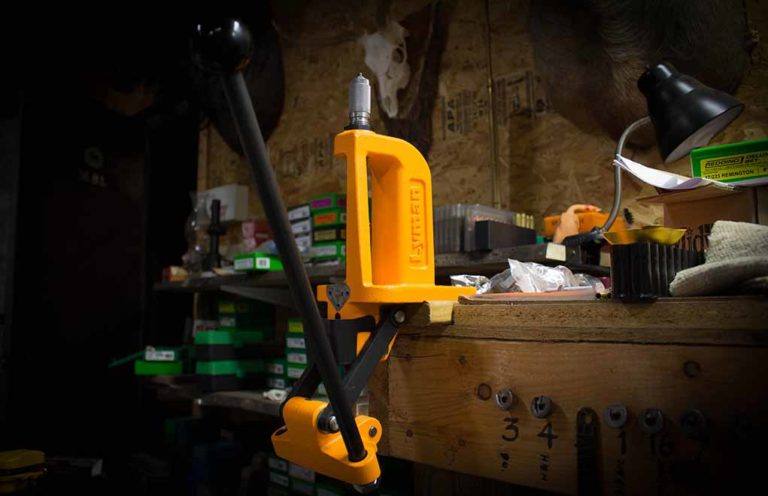
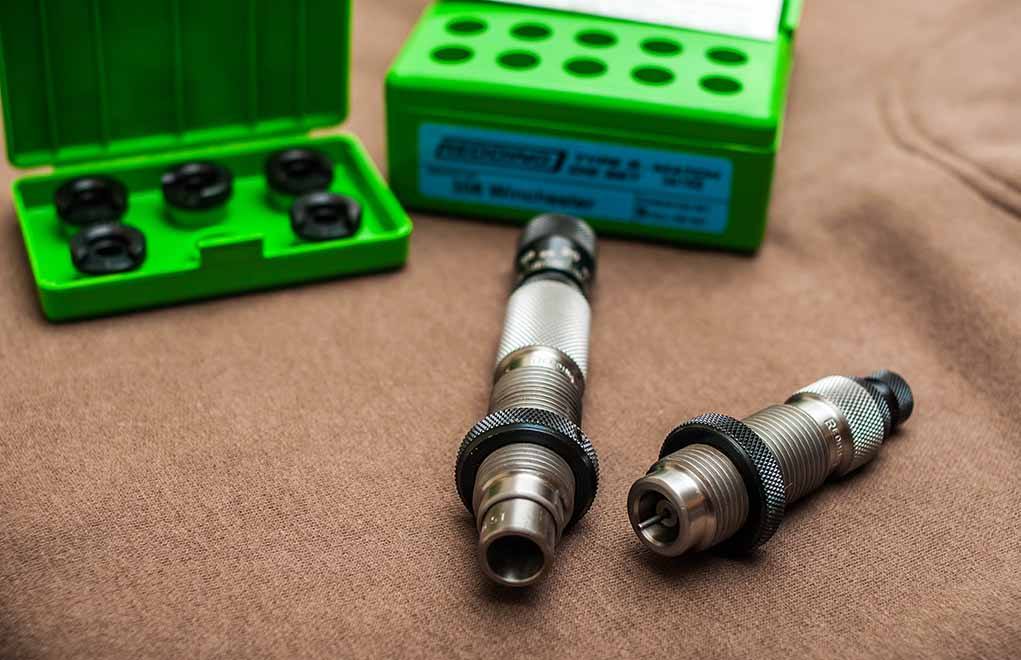
Exactly what equipment do you need to create a functional and efficient reloading bench?
What Qualifies As Essential Handloading Equipment:
- Reloading press
- Reloading die sets for specific calibers
- Caliber specific shell holders
- Balance beam or elecrtronic scale
- Calipers
- Chamfer/deburring tool
- Case trimmer
- Priming tool
- Case lube
- Reloading manual(s)
We’ve seen an undeniable surge in the number of people enjoying the shooting sports. As a result of the ever-increasing number of concealed-carry permits and the availability of training, along with the popularity of long-range shooting, there’s an awful lot of lead in the air.
Those guns need to be fed, and ammo can be expensive. Historically, reloading ammunition has been an affordable and beneficial means of shooting more and shooting better, but I’m surprised at how many highly experienced shooters admit to not having the foggiest idea about the practice.
Not that it’s necessary to know how to create ammunition in order to be a proficient shooter, but understanding what makes a cartridge tick and having the ability to modify its performance have become great assets to me on many different levels.
RELOADING VS. HANDLOADING
What is “reloading?” Simply put, reloading a centerfire cartridge is the process of properly assembling the components—case, primer, powder and projectile—of a cartridge. Technically, I use the term, “reloading,” to describe the basic function of using fired cases or hulls to make ammunition. I reserve “handloading” for a more specific, in-depth process that perhaps involves new cases or making cases for one gun from brass for another. Perhaps it’s splitting hairs, but that’s the way I see things.

Tackling the reloading side of things first, that fired brass cartridge case—which has expanded to be a mirror image of the chamber and is larger than it originally was—needs to be resized and brought back to the original specifications.
Brass was chosen for the case material because of its malleability. It can be used for several firings, because it can be squeezed back down to dimension without too much trouble (until the working of the material makes it brittle). Brass also has a tendency to flow, moving forward toward the case mouth, and fired cases might need to be trimmed back to their appropriate length.
Once the case is resized and trimmed to a proper length, and after the spent primer is knocked out of the primer pocket, the reconstruction process begins. A new primer of appropriate size and type can be installed, a specified amount of a particular type of powder charges the case, and a new bullet is seated into the case to a specified depth.

This sounds relatively easy—and, to be honest, it is. However, it comes with a certain amount of responsibility, because an overcharged case or even the wrong type of powder can lead to catastrophic results, including blown-up firearms, maimed shooters or even death. Follow the rules, and you’ll be as safe as if you were at your mother’s side.
Handloading will involve some more-advanced techniques. Even so, the two processes have the same basic principals, including the purposeful manipulation of powder charge, bullet seating depth, muzzle velocity and other parameters for precision or energy figures. Certain dimensions of the case can be controlled to give more-uniform results, smaller groups, better performance in a particular firearm, etc.
Handloading can often use all-new cartridge cases; there are those who believe the new cases offer less chance of malfunction, especially for defensive weapons or the rifles used for dangerous game—and that’s not necessarily a bad thing. Quite obviously, using the fired cases is the more cost-effective route, but considering the price of a brown bear hunt or a Cape buffalo safari, the cost of new brass cases is a small fraction, especially if it brings peace of mind.
ESSENTIAL TOOLS
You’ll need some specialized tools in order to load your ammunition, and the list of tools will invariably increase as you hone your skills and follow the path down the rabbit hole.
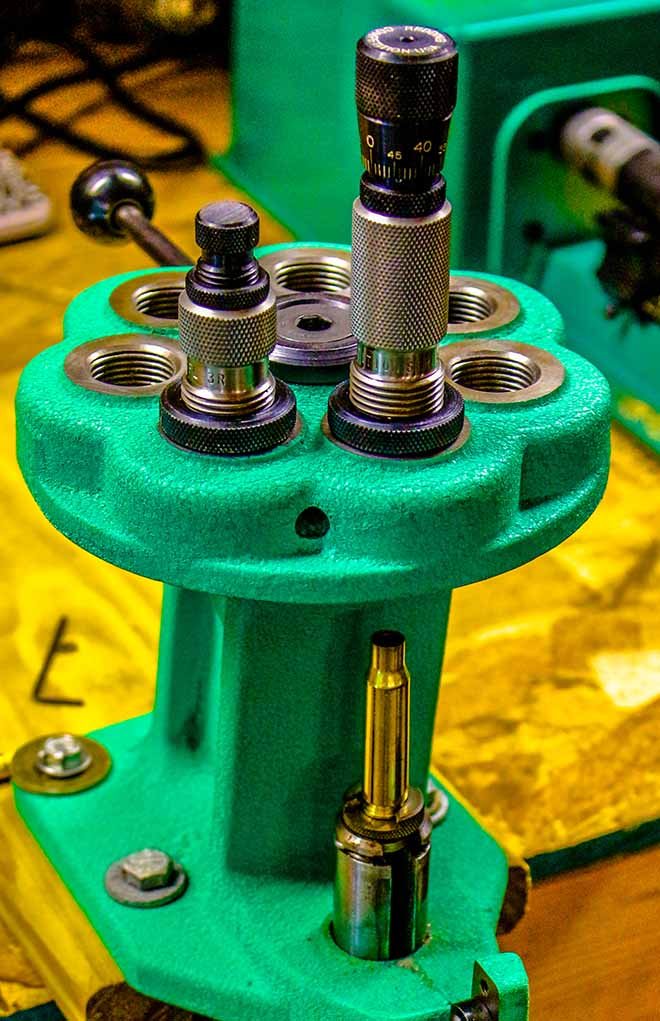
A good reloading press will be a must. There are many brands and styles to choose from: Single-stage presses perform just one operation at a time. Turret presses can handle many reloading dies in a rotating head. Complex progressive presses can produce a serious amount of ammunition in a short period of time. For the beginner, I feel a single-stage press is the best way to learn, and it’s a tool you’ll always have on your reloading bench.
Reloading dies are specific to each cartridge you intend to load, and you’ll find that a set of dies consists of two or three dies. The resizing die shrinks the brass case back to proper dimension and knocks out the spent primer, and the seating die presses the new bullet into the case. Some straight-walled cartridges will require a flaring die to bell the case mouth so the bullet can be seated without damaging the case.
Load Up On Reloading Info:
- The Flexible And Forgiving .30-06 Springfield
- The .45 Colt: A Wheelgun Classic
- .300 Win. Mag.: The Answer To Most Hunting Questions
- Tips For Reloading the .223 Remington
You’ll also need the specific shell holder for each of the cartridges you’ll be loading. There is some overlap here: For example, the .375 H&H and its belted magnum offspring all use the same shell holder, as does the 7×57/.30-’06/.308 family of cartridges. Manufacturers’ charts will tell you which shell holders you’ll need.
You’ll need a means of measuring the weight of powder and bullets, alike, and there are a good number of balance beam and electronic scales available. I own both, because I find that electronic scales are quick and convenient; yet, a balance beam scale requires no power, and gravity never wears out. They are also less susceptible to environmental interference.
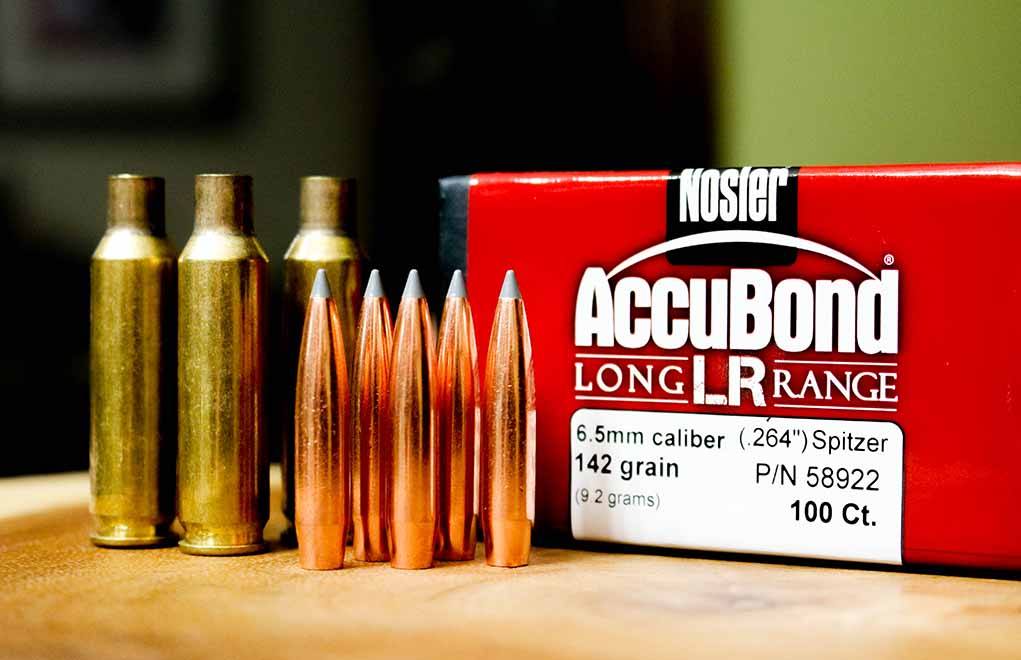
A good caliper—electronic or dial—is a must for the reloading bench in order to measure the length of cartridge cases, as well as the overall length of your finished cartridges.
A case trimmer is another must-have, as is a chamfer/deburring tool for cleaning the case mouths after trimming. Most presses will have some means of installing primers. However, a hand priming tool is a good idea, because it gives a bit more feel when seating primers without too much leverage.
With the exception of some little things, such as case lube and loading blocks, you can make do with the tools described above. There are numerous higher-tech tools available (and I employ and enjoy them), but they are beyond the scope of this article.
Reference material, namely one or more reloading manuals, will be invaluable to the reloader. There is a list of cartridge/bullet/powder charge recipes (I consider them “lab reports” from the manufacturer), which serves as a guide for you, the reloader, to develop your own specific load data.
THE PURPOSE
Let me give this caveat: Factory ammunition is better today than it has ever been. If you feel you’re satisfied with the way your rifle or pistol performs with factory ammunition, so be it. But if you’re like me, and you strive for the best performance available, there are all sorts of options available to you as a handloader.
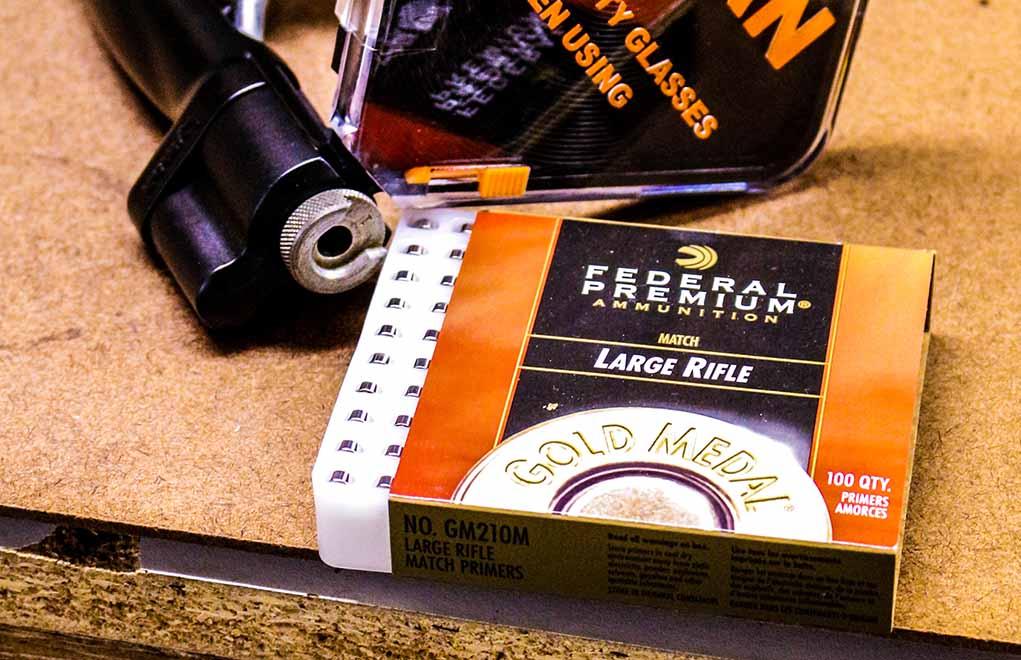
I’ve hunted a good variety of game species across four continents, and while I’ve used my fair share of factory ammunition, the majority of my hunting, including dangerous game, has been with my own handloaded ammunition. My most accurate rifle/ammo combinations are based on my own handloads, and I attribute that to the level of detail and meticulous attention given to the loading process.
Handloaded ammunition can give the shooter/hunter an opportunity to use projectiles that simply aren’t offered by the ammunition factories. My .404 Jeffery loves the Woodleigh Hydrostatically Stabilized Solids, and my .470 Nitro shoots the Peregrine BushMaster bullet very well. Obtaining ammunition for my .318 Westley Richards is nearly impossible.
Handloading has been the answer for all three, giving me much more latitude as a hunter. If you own an obscure caliber (for instance, you inherited Grandpa’s .33 Winchester), you can handload your own ammunition, bringing that gun back to life.
Should you want a different level of performance from your favorite, old .30-’06, you can easily reduce velocities via handloading—for example, to introduce a new hunter/shooter to a big-game rifle without causing a flinch.
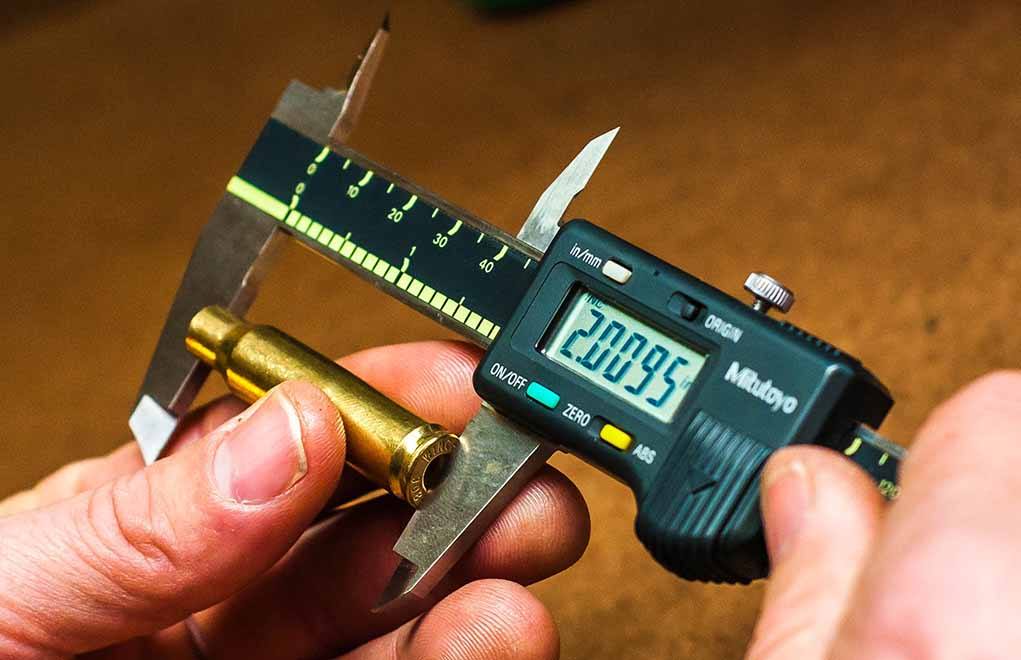
If you remember the ammunition crunch of 2013/2014, when the shelves were bare and folks were hoarding what they could find, the reloading press kept all my rifles well supplied. My loads are consistent—because they use the same type and weight of powder—whereas a factory can change the load formula slightly without the public’s knowledge, changing the performance of the gun.
THE BENEFITS
The financial benefit of reloading is not as apparent as it once was. Considering the common calibers for both handgun and rifles, there are many affordable ammunition options the average plinker, target shooter or hunter can get by with. Averaging the cost of reloading tools, as well as component costs and the value of your time, it might not be worth it to load up a weekend’s worth of 9mm Luger or 45 ACP.
If you like big-bore rifles, especially the dangerous-game calibers, you can quickly see a return on your investment, because factory ammunition can run as much as $10 per shot (or even more). Practicing with factory ammo can quickly strain the budget, and handloading the ammo will not only give you more ammo per dollar but more practice as well—which is the most important point.
The process of refining your handloaded ammo has an additional benefit: Time spent at the bench testing the various loads will certainly make you more familiar with your hunting rifle … and a better shot too. Trying different bullets at different velocities will soon educate you about the effects of barrel harmonics. Sometimes, a rifle that has been deemed a dud will come into its own with a new handload and new harmonics.
I’ve seen an older Savage 99 proven to print 2½ MOA with factory loads turn into a ¾ MOA rifle with handloads. Choices as simple as switching primer brand or varying the powder charge by ½ grain can radically change the accuracy. When you handload your ammo, you are in control of the parameters.
BRANDS OF GEAR
As with rifles, pistols or optics, reloaders have their favorite brands of gear. As you shop, keep in mind that the brands are interchangeable: RCBS dies will fit in a Redding press, and Lyman shell holders will work in a Lee press.
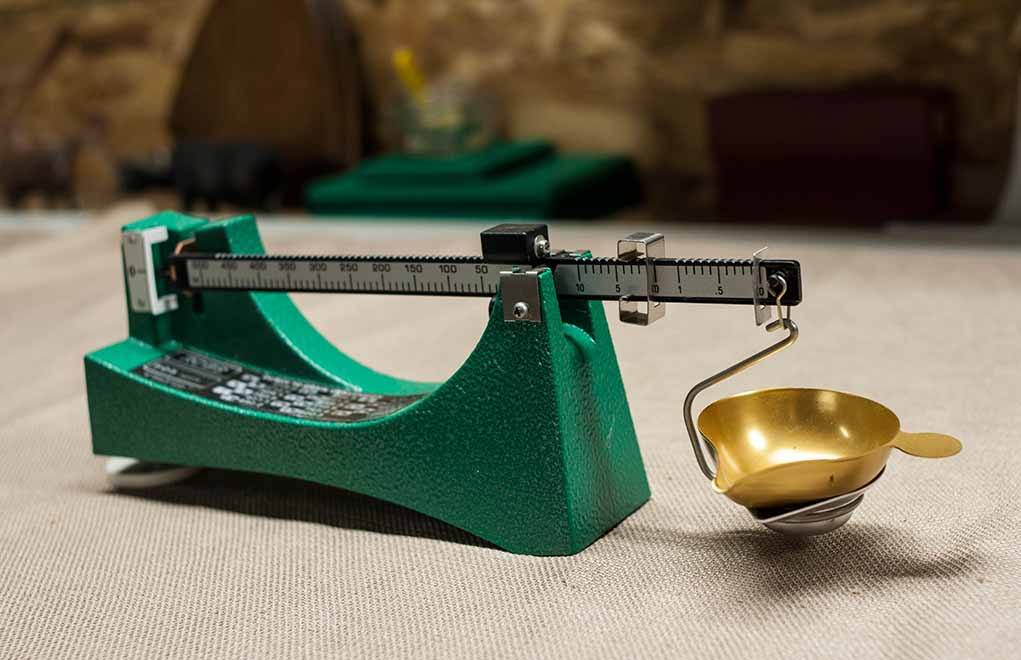
You usually get what you pay for, but I’ve made thousands of rounds of accurate ammunition on some very inexpensive gear. I advise you buy the best you can afford, because most of the more expensive pieces of gear are a good value.
My own collection of gear is a hodge-podge of assorted brands, although I gravitate toward Redding and RCBS. Lyman makes good gear—and has for decades—as do Hornady, Forster, Dillon and others. Lee has long prided itself on its affordability. In fact, I learned to reload on my dad’s Lee three-hole turret press.
Good gear makes life easier, but if the more affordable gear is what works for your budget, you can learn how to use it and still have positive results.
CONSIDER HANDLOADING
Reloading might not be for everyone; I know many people who simply enjoy shooting and want to go no further. I enjoy the challenge of creating a load for each rifle I own, along with helping others find solutions to the accuracy “puzzle.”
Handloading allows me to be in complete control of the performance of my guns, and in the off seasons, it keeps me in the sporting lifestyle. I have found projectiles that aren’t available in any form other than component, and I feel a certain sort of pride when I take an animal or print a tight group with my own ammo.
If you don’t already handload, consider it; you won’t regret the decision.
Editor's Note: This article originally appeared in the 2019 Shooter's Guide issue of Gun Digest the Magazine.

Next Step: Get your FREE Printable Target Pack
Enhance your shooting precision with our 62 MOA Targets, perfect for rifles and handguns. Crafted in collaboration with Storm Tactical for accuracy and versatility.
Subscribe to the Gun Digest email newsletter and get your downloadable target pack sent straight to your inbox. Stay updated with the latest firearms info in the industry.

![Best Concealed Carry Guns In 2025 [Field Tested] Wilson Combat EDC X9S 1](https://gundigest.com/wp-content/uploads/Wilson-Combat-EDC-X9S-1-324x160.jpg)


![Best 9mm Carbine: Affordable PCCs [Tested] Ruger Carbine Shooting](https://gundigest.com/wp-content/uploads/Ruger-Carbine-Shooting-100x70.jpg)
![Best AR-15: Top Options Available Today [Field Tested] Harrington and Richardson PSA XM177E2 feature](https://gundigest.com/wp-content/uploads/Harrington-and-Richardson-PSA-XM177E2-feature-100x70.jpg)
